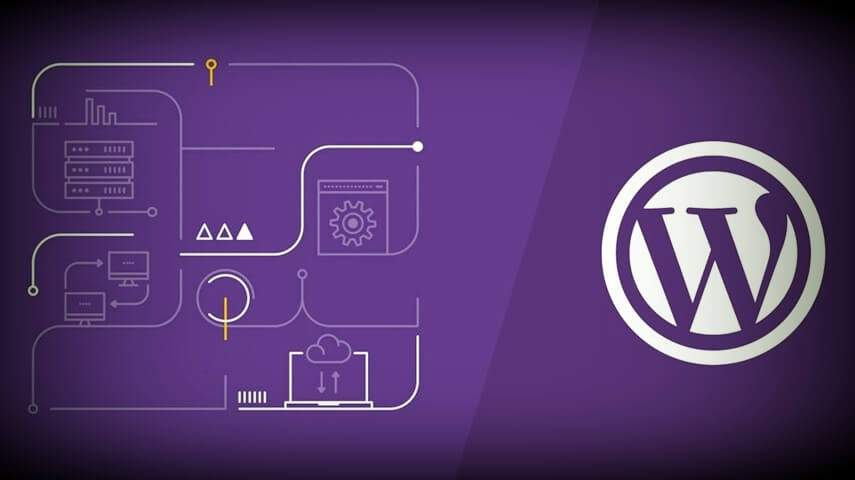WordPress Performance Monitoring and Security Optimization
WordPress is one of the most popular content management systems (CMS) in the world, powering over 40% of all websites on the internet. While WordPress is known for its ease of use and flexibility, it’s also important to ensure that your WordPress website is performing optimally and secure. In this article, we will discuss WordPress performance and security monitoring, and provide tips on how to optimize your WordPress website for both performance and security.
Performance Monitoring
Performance monitoring is the process of measuring and analyzing the performance of your WordPress website. There are several tools and techniques you can use to monitor your website’s performance, including:
- Google PageSpeed Insights: Google PageSpeed Insights is a free tool that measures the performance of your website on both desktop and mobile devices. It provides a score out of 100 and identifies areas where you can improve the performance of your website.
- GTmetrix: GTmetrix is another free tool that measures the performance of your website. It provides a detailed report that includes information about your website’s load time, page size, and the number of requests made by your website.
- Pingdom: Pingdom is a website monitoring service that provides real-time monitoring of your website’s performance. It also provides a detailed report that includes information about your website’s uptime, load time, and page size.
- New Relic: New Relic is a monitoring tool that provides real-time insights into your website’s performance. It provides detailed reports that include information about your website’s response time, throughput, and error rate.
- WordPress plugins: There are several WordPress plugins that you can use to monitor your website’s performance, including WP Performance Profiler, WP Optimize, and WP Super Cache.
Optimizing Performance
Once you’ve identified areas where your website’s performance can be improved, there are several steps you can take to optimize the performance of your website, including:
- Optimizing images: Images can be a major contributor to slow page load times. To optimize images, you can use a tool like Smush or Kraken.io to compress images without sacrificing quality.
- Using a Content Delivery Network (CDN): A CDN is a network of servers that distributes content to users based on their location. By using a CDN, you can reduce the load on your web server and improve the performance of your website.
- Caching: Caching involves storing frequently accessed data in memory or on disk, so it can be retrieved more quickly. WordPress caching plugins like WP Super Cache and W3 Total Cache can help improve the performance of your website by caching frequently accessed data.
- Minimizing HTTP requests: HTTP requests are requests made by the browser to the server to retrieve resources like images, CSS, and JavaScript. By minimizing HTTP requests, you can improve the performance of your website.
- Optimizing CSS and JavaScript: Optimizing your CSS and JavaScript can also help improve the performance of your website. You can use tools like Minify and Gulp to minimize the size of your CSS and JavaScript files.
Security Monitoring
Security monitoring is the process of monitoring your website for security threats and vulnerabilities. There are several tools and techniques you can use to monitor your website’s security, including:
- Sucuri: Sucuri is a website security company that provides a range of security services, including malware scanning, firewall protection, and website backups.
- Wordfence: Wordfence is a WordPress security plugin that provides a range of security features, including malware scanning, firewall protection, and brute force protection.
- Jetpack Security: Jetpack Security is a WordPress security plugin that provides real-time security monitoring, malware scanning, and brute force protection.
- Google Search Console: Google Search Console provides a range of security features, including alerts for security issues and notifications if your website has been hacked or compromised.
- WordPress Security Audit Log: The WordPress Security Audit Log plugin provides a log of all user and system activity, so you can monitor for suspicious activity and potential security threats.
Optimizing Security
In addition to monitoring your website for security threats, there are several steps you can take to optimize the security of your WordPress website, including:
- Keep WordPress and plugins updated: WordPress and plugins are constantly being updated to address security vulnerabilities and improve performance. It’s important to keep WordPress and plugins updated to ensure that your website is secure and performing optimally.
- Use strong passwords: Weak passwords are a common security vulnerability. Use strong passwords that include a mix of letters, numbers, and special characters, and avoid using the same password for multiple accounts.
- Limit login attempts: Brute force attacks are a common security threat. Limit login attempts using a plugin like Login Lockdown to prevent brute force attacks.
- Use SSL: SSL (Secure Sockets Layer) is a protocol that encrypts data transmitted between the browser and the server. Using SSL can help protect sensitive data like login credentials and personal information.
- Backup your website: Regular backups are an essential part of any website security strategy. Use a plugin like UpdraftPlus or Jetpack to backup your website on a regular basis.
Conclusion
Monitoring the performance and security of your WordPress website is essential for ensuring that your website is performing optimally and is secure from potential threats. By using monitoring tools and techniques, you can identify areas where your website’s performance can be improved and potential security vulnerabilities. By optimizing the performance and security of your WordPress website, you can provide a better user experience and protect sensitive information. By implementing the tips provided in this article, you can optimize the performance and security of your WordPress website and ensure that your website is performing at its best.




